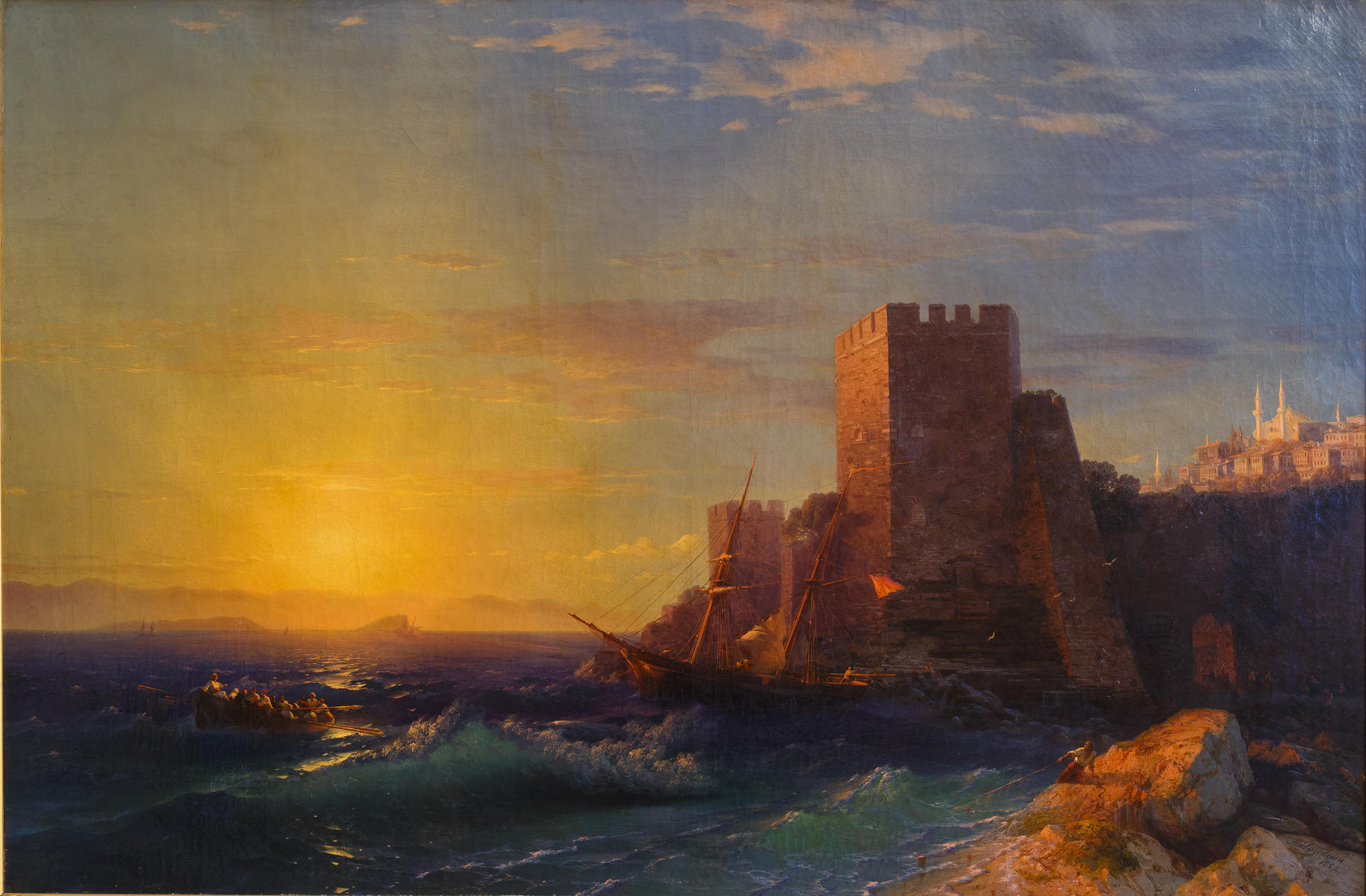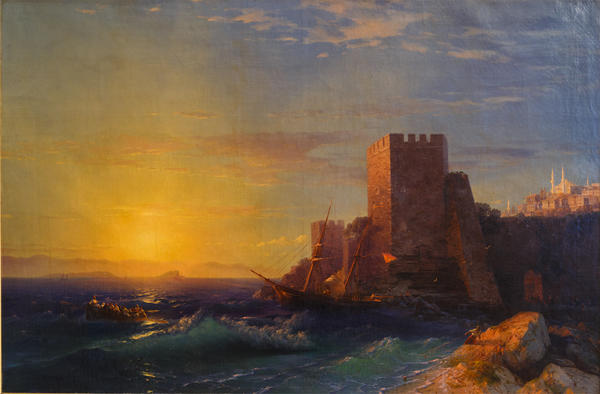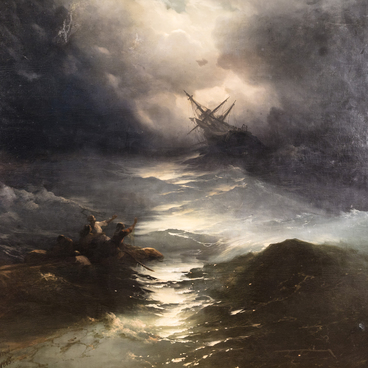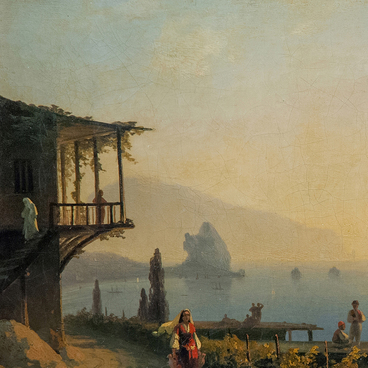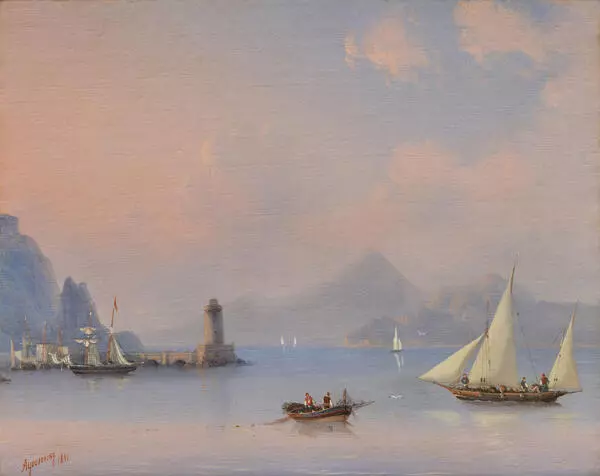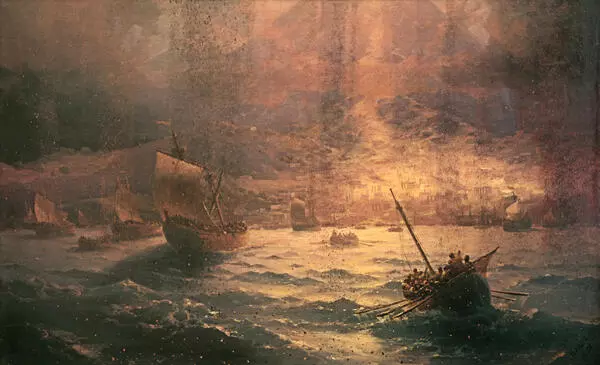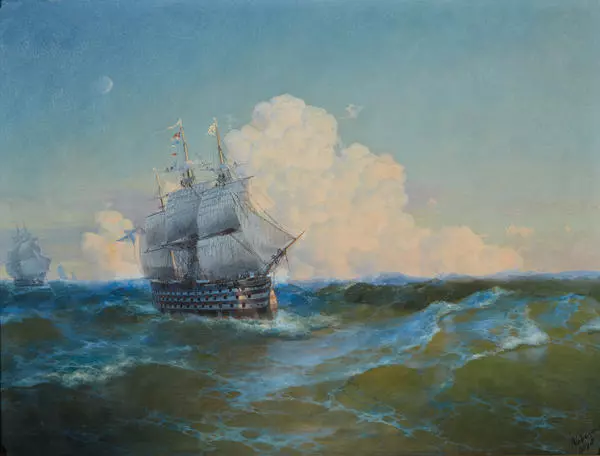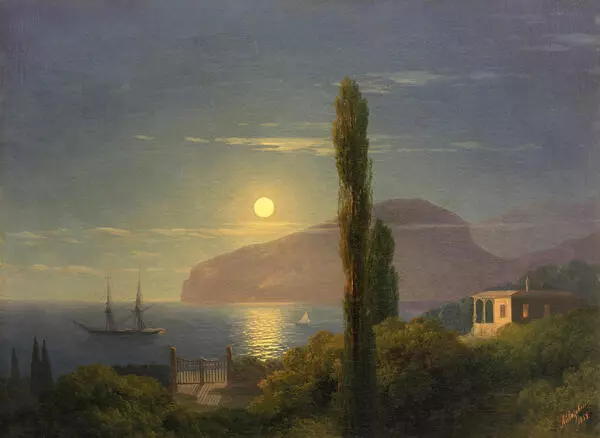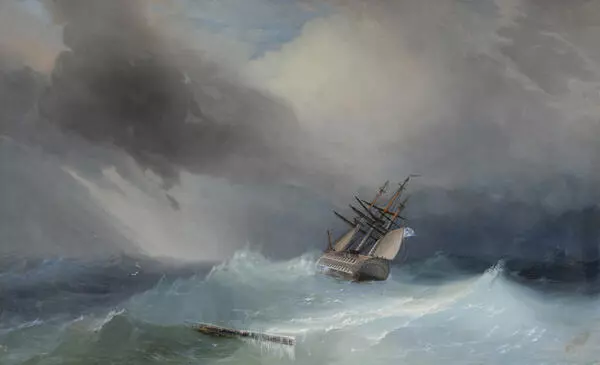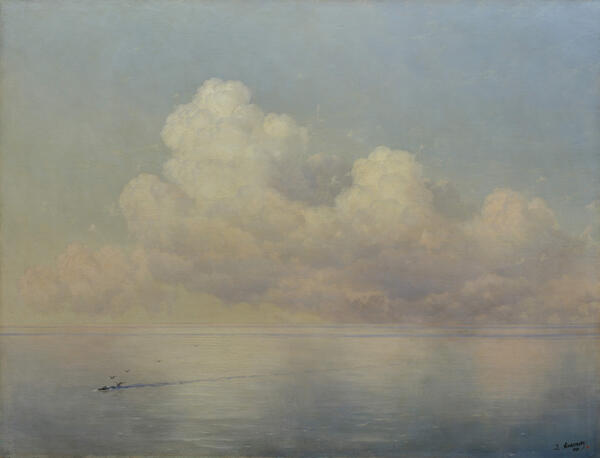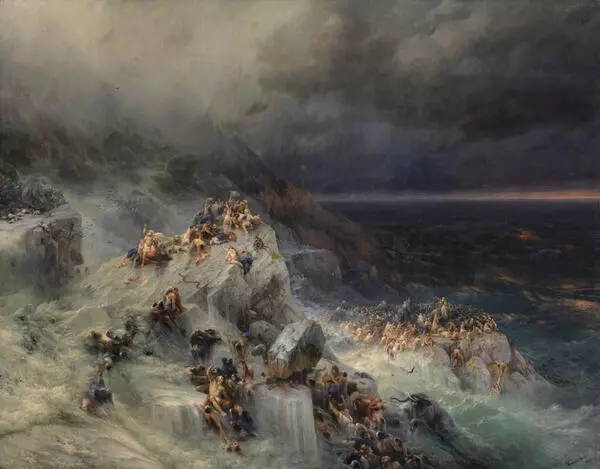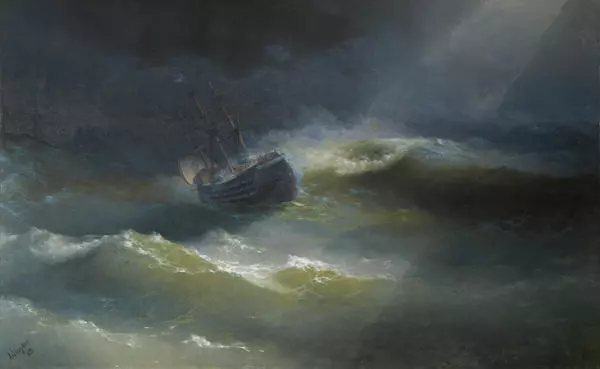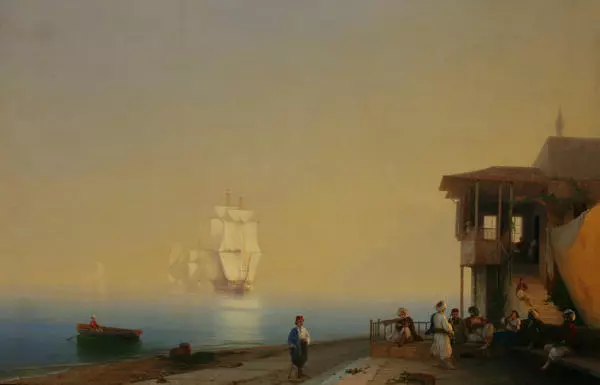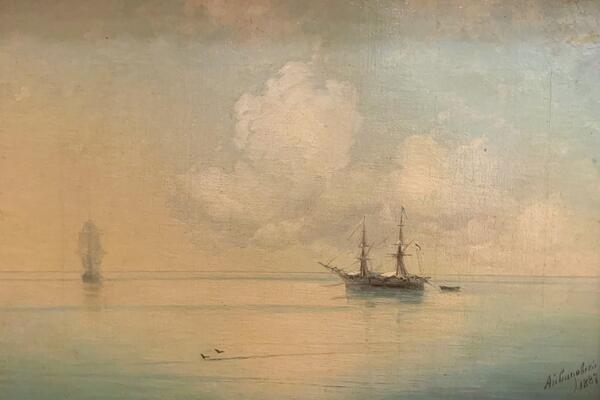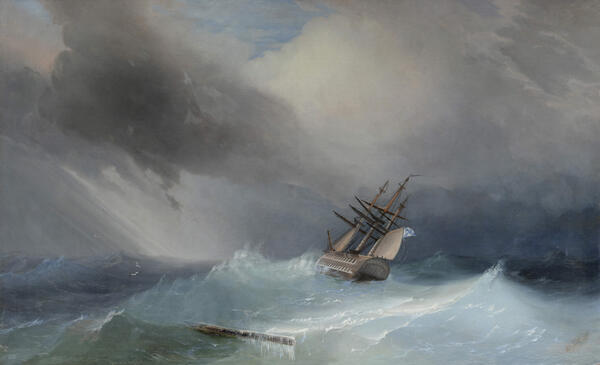The works of Ivan Aivazovsky present a selection of pictures themed on the painter’s Turkish voyages. The artist visited Turkey for the first time in 1845 during his voyage to the Greek islands. At the time, he was a member of Admiral Litke’s crew. Aivazovsky was assigned member of convoy accompanying Grand Prince Konstantin Nikolayevich on an expedition to Turkey and the Asia Minor.
On the voyage the artist did a lot of work and returned home with a folder full of pictures. The artist’s albums and notebooks contain numerous pictures and notes about the colours and shapes of clouds, waves, buildings, as well as elaborate sketches of mosques, coffee houses, oriental markets (bazaars), oriental attire.
The scenic views of Constantinople fascinated the artist, even though the stay in the city was quite short. The artist would frequently depict scenes of the city and the Bosphorus in his works of art. Aivazovsky shared his impression of the city with Count Zubov, “I have not seen anything as grand as this city, Naples and Venice pale in significance”.
Towers on a cliff in the Bosphorus makes a vivid impression on the viewers. Aivazovsky was working on the picture in late 1850ies. The picture presents an astounding array of colours. The artist depicts the sea and cliffs at sunset, in magnificent light. The author’s art, at the time, was romantic, glorifying a riot of feelings and the passion of nature. Aivazovsky immerses the viewers into contemplation of nature.
In the background the artist portrays two Genoese towers and part of a fortification wall, with white minarets and city-dwellings lying beyond. The sunset over the sea is penetrated with notes of anxiety. Shots of sunlight are flickering on the surface, the sea, dark-emerald in colour, is running high — an imminent storm is in the air. Gold-green and blue combinations of colour dominate the picture. Aivazovsky used his favorite image in this painting, depicting the blazing sun on the horizon, filling the picture with light, making the sky and water glitter in emerald. This light makes the picture so extraordinarily harmonious.
On the voyage the artist did a lot of work and returned home with a folder full of pictures. The artist’s albums and notebooks contain numerous pictures and notes about the colours and shapes of clouds, waves, buildings, as well as elaborate sketches of mosques, coffee houses, oriental markets (bazaars), oriental attire.
The scenic views of Constantinople fascinated the artist, even though the stay in the city was quite short. The artist would frequently depict scenes of the city and the Bosphorus in his works of art. Aivazovsky shared his impression of the city with Count Zubov, “I have not seen anything as grand as this city, Naples and Venice pale in significance”.
Towers on a cliff in the Bosphorus makes a vivid impression on the viewers. Aivazovsky was working on the picture in late 1850ies. The picture presents an astounding array of colours. The artist depicts the sea and cliffs at sunset, in magnificent light. The author’s art, at the time, was romantic, glorifying a riot of feelings and the passion of nature. Aivazovsky immerses the viewers into contemplation of nature.
In the background the artist portrays two Genoese towers and part of a fortification wall, with white minarets and city-dwellings lying beyond. The sunset over the sea is penetrated with notes of anxiety. Shots of sunlight are flickering on the surface, the sea, dark-emerald in colour, is running high — an imminent storm is in the air. Gold-green and blue combinations of colour dominate the picture. Aivazovsky used his favorite image in this painting, depicting the blazing sun on the horizon, filling the picture with light, making the sky and water glitter in emerald. This light makes the picture so extraordinarily harmonious.
